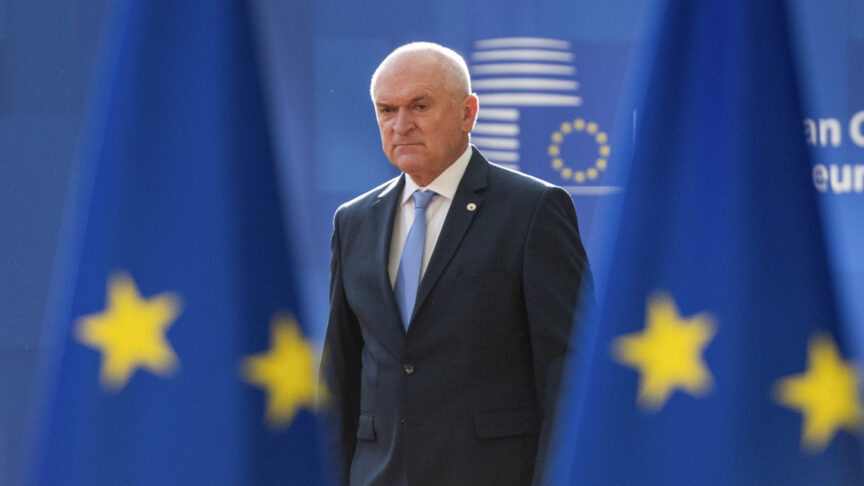Will the yellow vests movement spread across Europe?
The yellow vests could have more influence than expected on the debates leading up to the European Parliament election
France’s gilets jaunes (yellow vests) movement shows no sign of subsiding. With around 80,000 people attending its rallies each week, President Emmanuel Macron has launched a “grand debate” in the hope that he will address their concerns before the European Parliament election in May.
Launched on 17 November 2018, the movement plans to enter its next act soon, by standing candidates in the election. Yet this effort appears to have stalled for now, not least due to the number and political diversity of figures who present themselves as the movement’s leaders. The yellow vests may span the political spectrum, but they all aim to bypass established political structures.
Participating in the Raisina Dialogue in New Delhi last month, I was repeatedly asked about the nature and objectives of the movement. One hugely popular topic at the conference was the rising chorus of voices from marginalised communities around the world, which has often drowned out traditional policymaking. I was also asked whether the yellow vests qualified as such a community – to which I answered “no”.
Although they have not yet Europeanised their demands, the yellow vests have had an earth-shaking impact on European politics
Nonetheless, they fit into a social category of sorts. Although their claims are heterogeneous, they share a sense of having been demoted or downgraded in society, a longing for a renewal of participatory democracy, and a focus on social justice.
The movement is an expression of the crisis the French political class is undergoing, as well as a broader crisis of traditional modes of political representation. Although it is apparent elsewhere, the phenomenon resonates particularly in France because of the collapse of what the French call les corps intermédiaires (intermediary bodies) – namely, political parties, unions, political associations, and traditional media outlets. The vacuum this created has grown markedly because these intermediary bodies do not seem to know how to handle the movement. Indeed, until recently, these bodies spearheaded and organised social movements according to set rules. As Samuel Hayat explains, in the yellow vests demonstrations, “there is no procession; no person legally responsible; no negotiated route; no service d’ordre [security provided by the event’s organisers]; no leaflets, banners, stickers – but myriad personal slogans written on the back of a yellow vest”.
There is also a territorial divide at work: huge variations in population density between areas are a factor in the popularity of the movement. Most of the yellow vests come from rural and suburban areas that are disconnected from heavily populated central Paris.
Political and economic centralisation is another factor in the movement. This has only increased since Macron came to power. Taking personalisation of politics further than his predecessors, he has aimed to fully embody the presidency. This strategy has become a double-edged sword because – in the context of a crisis of the political class, plummeting unionisation rates, and the territorial divide mentioned above – the only mode of opposition consists in a direct challenge to the president. The violence during last Saturday’s demonstrations has increased the movement’s visibility, as has Macron’s prominent role on the international stage.
As a consequence, his response to the movement has also been personal: as part of the grand debate, the president is travelling across the country to meet mayors and other local elected officials for direct discussions. He is expected to answer questions on the problems that preoccupy them on the spot. Yet this is another double-edged sword. By taking the journey, Macron could reinforce the impression that he personifies everything the yellow vests stand against – with severe political ramifications in the European Parliament election. Nonetheless, he could emerge from the experience stronger if the movement and its protests slowly fade away, leaving the impression that he is doing the right thing by taking the time to listen to voters.
In the past few weeks – probably because of Macron’s international stature and visibility – there has been an increasing number of hints that the yellow vests could Europeanise their movement, both in their policy aims and in spreading beyond France’s borders. Although they have not yet Europeanised their demands, the yellow vests have had an earth-shaking impact on European politics. Last Thursday, in the worst diplomatic Franco-Italian spat since the second world war, Paris recalled its ambassador to Italy after Luigi Di Maio – the country’s deputy prime minister and the leader of the Five Star Movement – met with representatives of the movement. This dramatic turn of events led Italian Interior Minister Matteo Salvini to invite his French counterpart, Christophe Castaner, to meet him in Rome next week. Di Maio has signed a letter in Le Monde explaining that Italy and the Italian government regard France as an important contributor to the fight for civil and political rights, but that the future of European politics no longer lies in the hands of the right or the left. This, he argues, is why he met with representatives of the yellow vests.
Thus, they have not fully Europeanised their movement. But the yellow vests could have more influence than expected on the debates leading up to the European Parliament election.
The European Council on Foreign Relations does not take collective positions. ECFR publications only represent the views of their individual authors.


